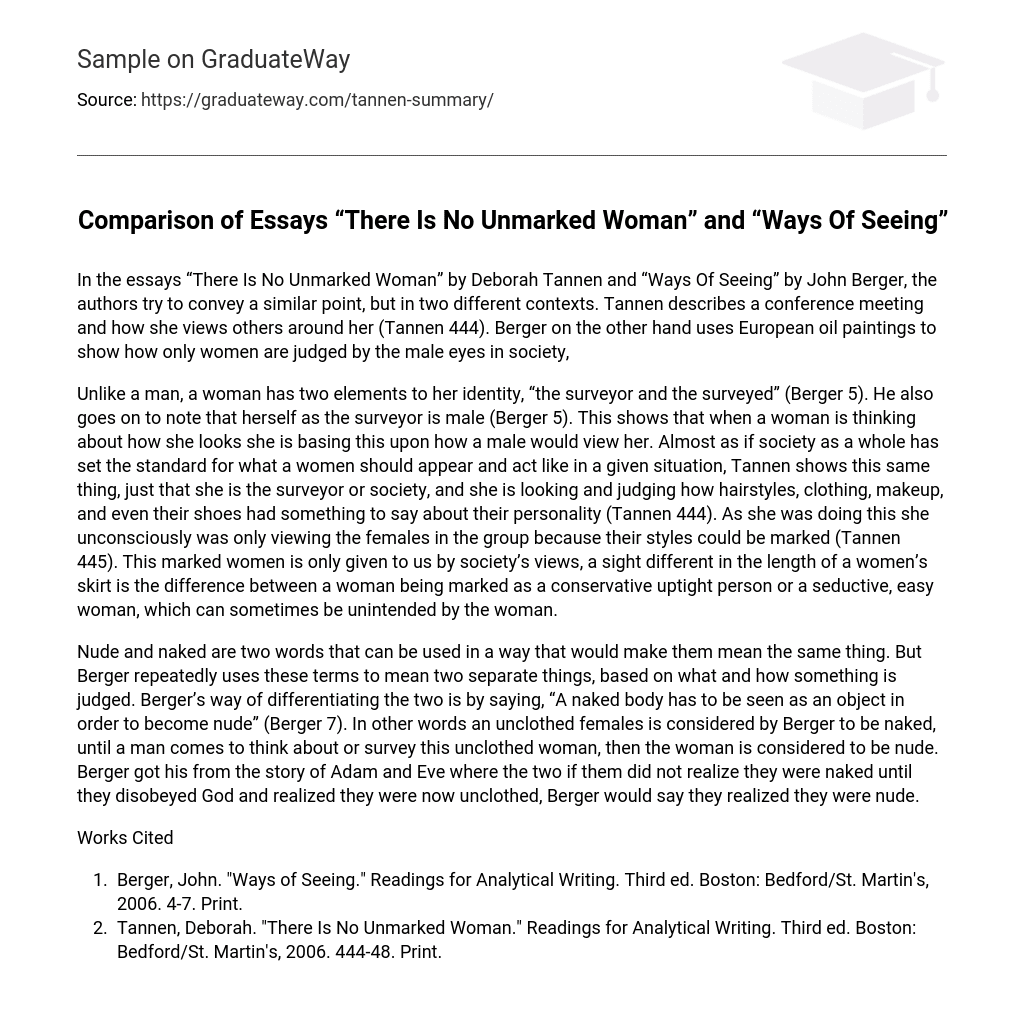In the essays “There Is No Unmarked Woman” by Deborah Tannen and “Ways Of Seeing” by John Berger, the authors try to convey a similar point, but in two different contexts. Tannen describes a conference meeting and how she views others around her (Tannen 444). Berger on the other hand uses European oil paintings to show how only women are judged by the male eyes in society,
Unlike a man, a woman has two elements to her identity, “the surveyor and the surveyed” (Berger 5). He also goes on to note that herself as the surveyor is male (Berger 5). This shows that when a woman is thinking about how she looks she is basing this upon how a male would view her. Almost as if society as a whole has set the standard for what a women should appear and act like in a given situation, Tannen shows this same thing, just that she is the surveyor or society, and she is looking and judging how hairstyles, clothing, makeup, and even their shoes had something to say about their personality (Tannen 444). As she was doing this she unconsciously was only viewing the females in the group because their styles could be marked (Tannen 445). This marked women is only given to us by society’s views, a sight different in the length of a women’s skirt is the difference between a woman being marked as a conservative uptight person or a seductive, easy woman, which can sometimes be unintended by the woman.
Nude and naked are two words that can be used in a way that would make them mean the same thing. But Berger repeatedly uses these terms to mean two separate things, based on what and how something is judged. Berger’s way of differentiating the two is by saying, “A naked body has to be seen as an object in order to become nude” (Berger 7). In other words an unclothed females is considered by Berger to be naked, until a man comes to think about or survey this unclothed woman, then the woman is considered to be nude. Berger got his from the story of Adam and Eve where the two if them did not realize they were naked until they disobeyed God and realized they were now unclothed, Berger would say they realized they were nude.
Works Cited
- Berger, John. “Ways of Seeing.” Readings for Analytical Writing. Third ed. Boston: Bedford/St. Martin’s, 2006. 4-7. Print.
- Tannen, Deborah. “There Is No Unmarked Woman.” Readings for Analytical Writing. Third ed. Boston: Bedford/St. Martin’s, 2006. 444-48. Print.





